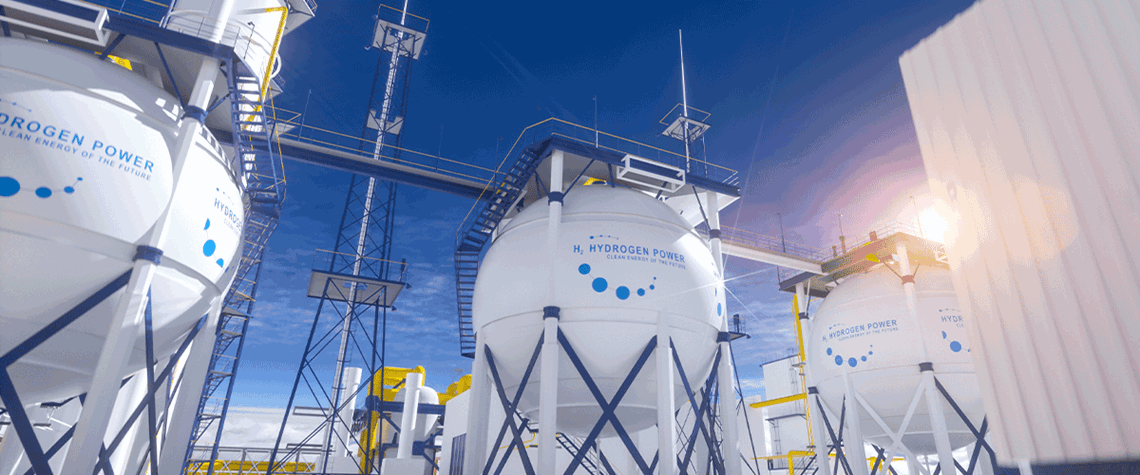The war in Ukraine has created an energy crisis, with European countries scrambling to secure short-term gas supplies and reduce reliance on Russian volumes in the medium term.
The scale of the gap between supply and demand is colossal, as Russia previously provided 40pc of the EU’s natural gas, while renewables accounted for 22.1pc of energy used in the EU in 2020, according to data platform Eurostat. This supply gap is particularly acute in the winter as domestic heating demand is higher and renewable generation lower.
The gap will shrink as high energy costs will lead to demand destruction, with people accepting lower indoor temperatures and the closure of energy-intensive industrial and manufacturing businesses—as seen by some manufacturers’ plans to downsize permanently in Europe due to the increase in natural gas and power prices putting pressure on value chains.
As all industries recognise the importance of ensuring security of energy supply and carbon reduction, we must look at what the new energy mix looks like.
Renewable energy can play a role in closing the supply gap and increasing domestic market resilience by ensuring that we are also reducing our reliance on foreign energy sources. Renewable electricity capacity is accelerating faster than ever, and the sector is developing a supply chain to allow a further ramp-up in renewable power capacity.
Furthermore, global installed renewable electricity capacity is forecast to increase by more than 60pc between 2020 and 2026, reaching more than 4,800GW—equivalent to the current global power capacity of fossil fuels and nuclear combined, according to the IEA. The EU and the UK have abundant renewable energy resources (particularly wind) and, according to current trends, renewable energy could cover half of the Russian energy supply gap within a decade.
However, the low capacity factor of renewables must be considered. In addition to accelerating the planning process and the supply chain capacity, a key challenge that must be overcome is the intermittency of renewable energy, which makes it less efficient in fulfilling wintertime peak demand.
This requires unlocking hydrogen as a storage medium and creating sources of supply that will then create demand. Blue (or even grey) hydrogen can be useful to kickstart the hydrogen economy but would not bridge the supply gap as these types require natural gas to be produced. Green hydrogen, which is produced with excess electricity in the summertime and during periods of low demand, can be stored and then blended into the gas grid or transformed back to electricity using hydrogen power plants.
Critical component
Even before the Ukraine war, organisations planning for the transition to net zero had identified hydrogen as a critical component, as illustrated in the Future Energy Scenario published by the UK’s National Grid.
Ramping up green hydrogen will take time as the technology is relatively new on a commercial scale. Xodus is at the forefront of this effort. For example, we are developing a 150MW green hydrogen plant in Western Australia.
Like any new technology, it has a higher cost in comparison to more mature methods of delivering energy and requires government support, but this will come down as supply scales up. The European Commission estimates €180–470bn will be needed before green hydrogen can make up 13–14pc of the EU energy mix in 2050.
The demand for green hydrogen should be addressed by governments mandating that it is gradually integrated into the natural gas systems supplying industry. This would spread the cost across all industrial energy users and create visibility for market demand to producers.
Hydrogen has a lower energy density than natural gas and will therefore require significantly more storage capacity. Investment in infrastructure in the near term is needed to allow medium-term switching from natural gas to hydrogen. For example, Xodus is working with a client developing a new storage facility in the south of England in which, as part of the initial infrastructure design, we have incorporated a degree of flexibility to ensure it can efficiently store natural gas and hydrogen from inception with minimal switching costs.
There is debate about where the investment in hydrogen should occur. According to analyst Michael Liebreich’s ‘hydrogen ladder’ diagram, hydrogen investments should be used only for hard-to-abate industrial sectors and the use of hydrogen for domestic heating makes little sense. However, others argue we should reuse as much infrastructure as possible (including domestic supply) to stimulate the hydrogen economy and lower the initial capital investment required in that effort.
Also, while green hydrogen can be generated in the UK, it still needs to be transported to consumers. To achieve this, the pipeline infrastructure will need to be modified and expanded to integrate the future hydrogen production.
A blended approach may be required, considering the mix of end-users, the proximity of renewable energy, the amount of excess energy supply, the volume of storage available and the ability of the local infrastructure to accept and transport the appropriate energy to end-users.
These approaches require large capital investment, but the current market provides great incentives due to the meteoric rise in the gas price in the last six months and the nearly 200pc increase in the EU’s emissions trading system carbon price in the past two years. Robust funding will provide insulation and insurance against commodity risk and carbon liabilities. This scale of investment is not excessive when the cost of the energy crisis to society is considered.
Jonathan Fuller is the director of advisory of the energy consultancy company, Xodus.
This article is part of our special Outlook 2023 report, which features predictions and expectations from the energy industry on key trends in the year ahead. Click here to read the full report.









Comments